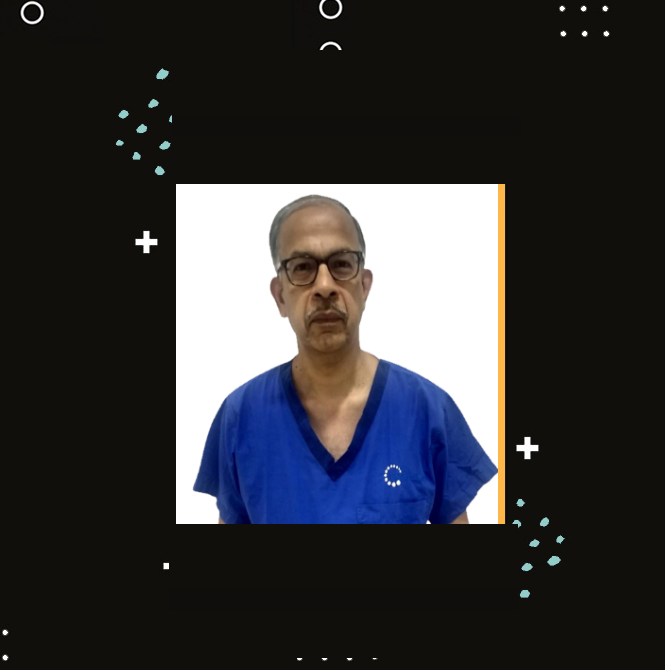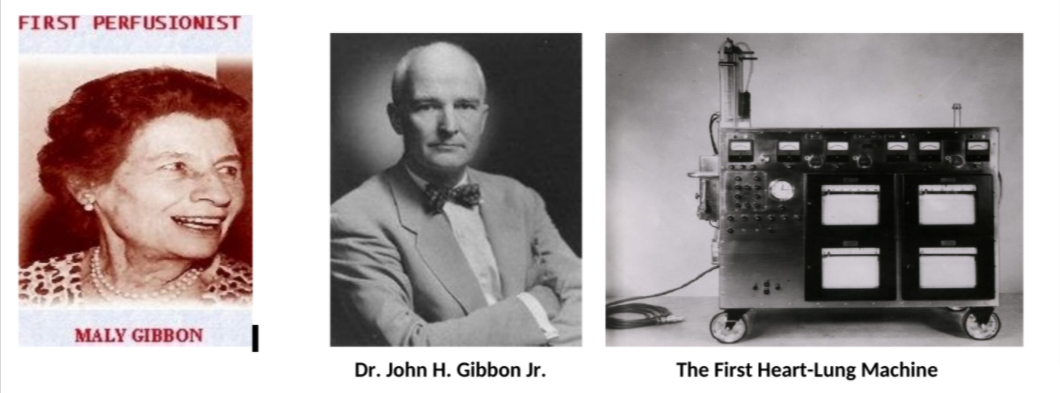
History (HIS-HER-STORY) of Perfusion
John Heysham Gibbon Jr., AB, MD, (September 29, 1903 – February 5, 1973) was an American surgeon best known for
inventing the heart-lung machine and performing subsequent open heart surgeries which revolutionized cardiac
surgery in the twentieth century.
In 1930 Dr. Gibbon was assisting Dr. Edward Churchill in an emergency pulmonary embolectomy. It was a desperate
attempt as no patient in the U.S. had survived the removal of blood clots in open-heart surgery. As he recorded the
patient’s waning vital signs prior to the procedure Dr. Gibbon thought, “If only we could remove the blood from her
body by bypassing her lungs, and oxygenate it, then return it to her heart, we could almost certainly save her life.”
Despite successful removal of large clots from her pulmonary artery, the patient never regained consciousness. This
“critical event” initiated Gibbon’s determination to produce a heart-lung machine. Over the next two decades, while
most of his colleagues and superiors shared little hope in the prospect of designing a successful apparatus, Gibbon
persevered by juggling fellowships and employment that allowed him time for research.
One of his supporter-colleagues was a researcher at Harvard, Mary “Maly” Hopkinson. Maly was born on September 25,
1903 Maly pursued work in scientific research, where she ultimately met her first husband, Dr. John ''Jack'' H. Gibbon.
Jack and Maly were partners in every sense of the word and their collaboration made it possible for the Gibbon dream
of the heart-lung machine to be realized. They married and continued working together, mostly at the University of
Pennsylvania’s research laboratories. By 1939, they published results of total body perfusion experiments on a number
of laboratory cats that survived by employing the early apparatus invented by Gibbon.
On May 6, 1953 at Jefferson Medical College Hospital, Dr. John H. Gibbon, Jr. and his staff, with the help of his latest-
designed heart-lung machine “Model II,” closed an atrial septal defect” in eighteen-year-old Cecelia Bavolek. This was
the first successful intra-cardiac surgery of its kind performed on a human patient. While Dr. Gibbon prepared the
patient, Maly Gibbon prepared the heart-lung machine for operation. Maly Gibbon is therefore considered the First
“Perfusionist”. Ms. Bavolek was connected to the device for three-quarters of an hour and for 26 crucial minutes, the
heart-lung machine completely supported all circulatory and respiratory functions.
In recognition of this historical event, this week of May is designated as National Perfusionist Appreciation Week.

While we Salute Maly and Dr. Gibbon, we Perfusionists rededicate ourselves to this wonderful profession.
Innovate, adapt, improvise, keep thinking, keep learning…
Wishing all my dear colleagues the very best for a rewarding and successful career in Perfusion
RAVINATH SWAMI
Mr. Ravinath Swami

